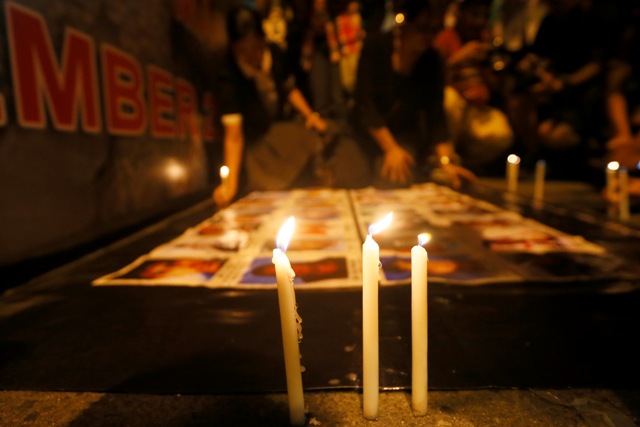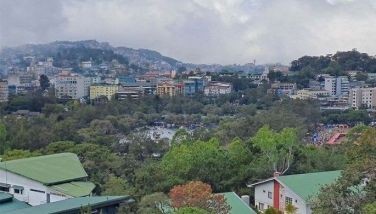How the Presidential Task Force on Media Security works

Members of the media may report threats to the task force, which will then monitor and provide assistance to the journalists concerned. Philstar.com/File photo
MANILA, Philippines — Despite his vitriol against news organizations that are critical of his administration, Rodrigo Duterte last year signed his very first administrative order as president creating an inter-agency body tasked to protect members of the press.
“All forms of political violence and abuses of power, whether by agents or elements of the State or of non-State forces against the so-called Fourth Estate, must stop,” Duterte declared in his October 11, 2016 order which formed the Presidential Task Force on Media Security (PTFoMS).
In the AO, Duterte cited a 2014 Human Rights Watch report which stated that the Philippines is one of the most dangerous places in the world to be a journalist because of killings and enforced disappearances.
The AO supersedes Administrative Order No. 35, which created an interagency committee on extralegal killings in 2012.
“The continuing attack on media workers is not only erosive of press freedom and free expression but also impedes the flow of information in community,” the president said.
But how does this task force work?
What is PTFoMS?
The presidential task force on violence against media workers is headed by Justice Secretary Vitaliano Aguirre II while Presidential Communications Secretary Martin Andanar serves as its co-chairperson.
The task force will consist of the secretaries of the interior and local government, and national defense as well as the solicitor-general, the executive director of the Presidential Human Rights Committee, the chiefs of the military and the police and the director of the National Bureau of Investigation.
Meanwhile, the chairperson of the Commission on Human Rights, the Ombudsman, and the heads of media organizations National Press Club, National Union of Journalists of the Philippines, Kapisanan ng mga Brodkaster sa Pilipinas, Publishers Association of the Philippines and the Philippine Press Institute were invited as observers and resource persons.
The task force was directed to conduct an inventory of all cases against media workers within its first 30 days.
The cases would be categorized as unsolved, under investigation, under preliminary investigation, under trial and under appeal. After conducting the inventory, the task force would assign special investigation teams that will handle unsolved cases.
“Greater priority shall be given to high profile cases perpetrated during more recent years to take advantage of leads that have yet to stale,” Duterte said.
The task force was also mandated to form a special oversight team that will actively monitor developments on the cases included in the inventory of cases and regularly submit recommendations.
Members of the media may also report threats to the task force, which will then monitor and, if necessary, provide assistance to journalists concerned.
Silent on online threats; ‘no convictions achieved’
Despite the task force’s mandate to ensure security for media workers, the document which created the body, however, is silent on threats received by journalists online.
Some journalists who have written critical pieces about Duterte have been subjected to online harassment and threats, prompting media groups to ask the government to protect freedom of expression.
Last year, freelance journalist Gretchen Malalad and Al Jazeera correspondent Jamela Alindogan-Caudron received threats of rape and physical harm from social media users who claim to be supporters of Duterte.
Manuel Mogato and Karen Lema of international news agency Reuters were also branded by bashers as “enemies of democracy” after they reported about Duterte’s remark on German leader Adolf Hitler, who ordered the killing of millions of Jews during World War II.
According to Andanar, the mechanisms to protect journalists from online harassment may be included in the implementing rules of the AO.
He also advised journalists that they can report any cyber-threats against them to the task force.
“If you are threatened anywhere, be that online or on the ground, it’s still a threat. And it still violates your security and your right to have a good life, liberty and security as mentioned in this administrative order,” Andanar told reporters in Malacañang on October 13 last year.
“The reason why the president wanted this Administrative Order no. 1 is because he cares for you, for us. And he believes in freedom of the press,” he added.
Meanwhile, despite the formation of the task force, the Philippines nonetheless ranked fifth among countries with the highest record of impunity over the last decade, according to a 2017 report by New York-based press freedom watchdog Committee to Protect Journalists.
This placed the Philippines among the top 12 countries in the global impunity index which was led by Somalia followed by Syria, Iraq, and South Sudan.
Although the Philippines’ latest spot was a notch lower than last year’s ranking, CPJ said that while PTFoMS announced probe into several cases of murder, no convictions were achieved.
CPJ also cited at least 42 Filipino journalists killed with complete impunity in past decade and blamed government officials who are “getting away with murder.”
For resolution
PTFoMS chief Undersecretary Joel Egco, a former journalist, promised that the task force would protect journalists.
“We will continue to fulfill our mandate of ensuring the protection of the life, liberty and assure the security of all media workers in the Philippines,” Egco said.
“Being in the fifth slot may seem to be a marked improvement from our past rank as second, but we must not put our guard down and be complacent,” he added.
“For as long as there is one journalist in danger, we will continue to exist.”
In a text message to Philstar.com, Egco also disclosed that the murder of Larry Que — whose case has been verified as work related and has been included in the tally of media killings — has been “submitted for resolution” to the Justice department.
The respondents in the complaint, according to Egco, were Catanduanes Gov. Joseph Cua, and police officers Vincent Tacorda and Dan Bagay.
Que’s case is the first recorded media killing under the Duterte administration. He was shot dead by motorcycle-riding men in Barangay San Isidro, Virac on Dec. 19, 2016.
The police also previously said the killing of the Catanduanes-based journalist was considered the only case of extrajudicial killing under the Duterte government.
But the police later "corrected" its statement in an apparent move to allay fears of summary killings under Duterte's drug war.
- Latest
- Trending





























